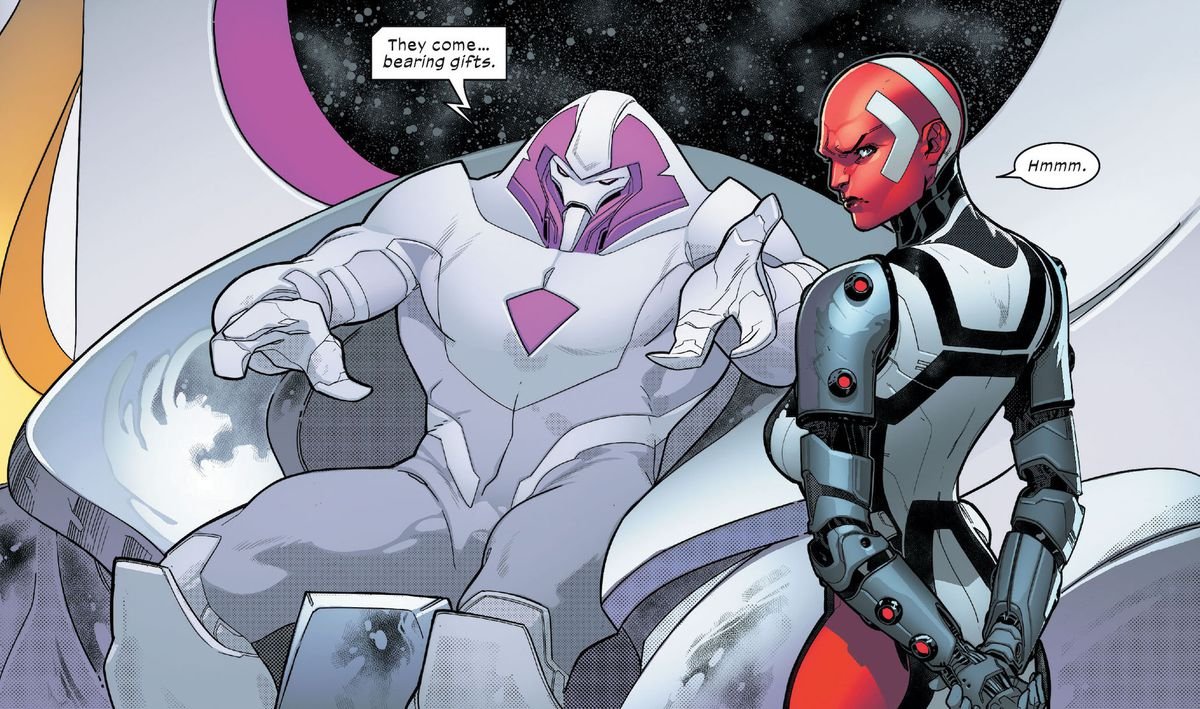The reveal of the big villain of X-Men ’97 gives mutants their second greatest enemy: AI
With only the three-part final blitz remaining, X Men ’97 has revealed its big villain, and it’s the same as their old one.
This is not criticism! It’s right in line with the biggest theme in X-Men history that most adaptations have refused to touch – that mutants only An option for the future of humanity. There are other children of humanity’s pride, they want their day in the sun, and they are willing to kill mutants And people to get it.
(Ed. remark: This piece contains spoilers for X Men ’97 episode 7, “Bright Eyes.”)
Image: Marvel Studios Animation
In “Bright Eyes,” the X-Men search for the mastermind behind the Kaiju-Sentinel massacre in Genosha. The tracking leads to Mutant Enemies #1 and #2: Henry Peter Gyrich, a human-supremacist government agent imprisoned for (apparently) killing Professor X; and Bolivar Trask, creator of the Sentinel robots.
We see a shadowy figure suffocating Gyrich so that he can no longer reveal secrets. And when the Trask undergoes a strange transformation and seems on the verge of defeating all the X-Men single-handedly until Cable shows up to help and issue a warning: Gyrich, Trask, and even Mister Sinister are working for someone even more terrifying.
The final moments of the episode reveal that person to be that shadowy figure, and even give him a name: Bastion.
Who is Bastion?
Bastion has been on the X-Men villain block a few times, but he is best known as the villain from the 1997 storyline Operation: zero tolerance – hence that acronym you see in ‘Bright Eyes’, and the title of X Men ’97‘s three-part finale arc, “Tolerance Is Extinction.”
During a time when anti-mutant sentiment was at an all-time high (the X-Men had to kill the Avengers and Fantastic Four to save the world; they actually survived, don’t worry about it), a mysterious man named Sebastian Gilberti convinced the US government to support his mutant eradication plan.
That plan was to create the Prime Sentinels, which resemble human sleeper agents. “Bastion” developed nanotechnology that could be implanted into unwitting humans, allowing them to turn into powerful, tricked cyborgs at his will and place their actions under his control – exactly what seems to have happened to Bolivar Trask in “Bright Eyes.”
But Bastion wasn’t the normal (albeit hateful) human guy he seemed, and “Bright Eyes” has some hints about this too. He refers to Mister Sinister as an “old villain” who failed to kill the X-Men for years, and Sinister immediately fires back that Bastion was “one of those villains once.”
“Yet, unlike the rest of you, I have evolved,” Bastion replies.
In the comics, it was eventually revealed that Bastion had his own cyborg secret, even without his knowledge – he was and always was an offshoot of the most powerful Sentinel to ever exist, Nimrod.
Who the hell is Nimrod?

Nimrod is the Skynet of the X-Men stories, an artificial intelligence from the future that hunts mutants. In Marvel Comics canon, all Sentinel production eventually leads to the creation of a Nimrod, in every timeline. And in each timeline, Nimrod and his cohort of mutant-hunting machines eventually decide that mutants aren’t their only enemies, and turn on the rest of the human species as well.
(Also, in defense of Nimrod’s creators, Chris Claremont and John Romita Jr., it was invented in 1984, when “nimrod” was just about is becoming better known as a universal American snake insult than as a reference to the Biblical hunter.)
Nimrod did indeed appear X-Men: The Animated Series, largely as a threat in a possible future, or someone who has traveled through time to the present. In the 1992-1997 era, there simply weren’t many Nimrod stories to choose from.
The idea of the X-Men fighting to protect mutants and humans from the threat of rogue artificial intelligence may seem strange – but that’s largely because most modern a consistent X-Men threat. No Sentinels, no Nimrod, no human-mutant-AI triple war.
Sentinels have become much more than bulky purple robots
It is illustrative to point out that Bolivar Trask, the Sentinels, and the Sentinel factory Master Mold were introduced in 1965, right in the B-movie era of the Atomic Age.
Nimrod, on the other hand, was created that year The terminator came out. As technology, and our concerns about technology, have evolved, the way X-Men creators view Sentinels has evolved with it. In the late 1990s, personal computers and informal access to the Internet increasingly integrated technology into everyday life. The real potential computer apocalypse, Y2K, became public knowledge! It’s no wonder that Nimrod and the idea of rogue technology would be worked back into the foundation of the X-Men.
X-Men stories are, as always, about the conflict between humanity and the idea that our mutant children are the natural future of the species. But quietly in the background looms a steady drumbeat, warning that if humanity is not careful in the way it technological children – if it not only teaches children to hate, but expressly creates beings for that purpose – it will bring about its own destruction.
It’s the kind of story that X-Men: The Animated Series I couldn’t have told it in 1997, which is exactly why it’s so exciting X Men ’97 takes over the torch.
